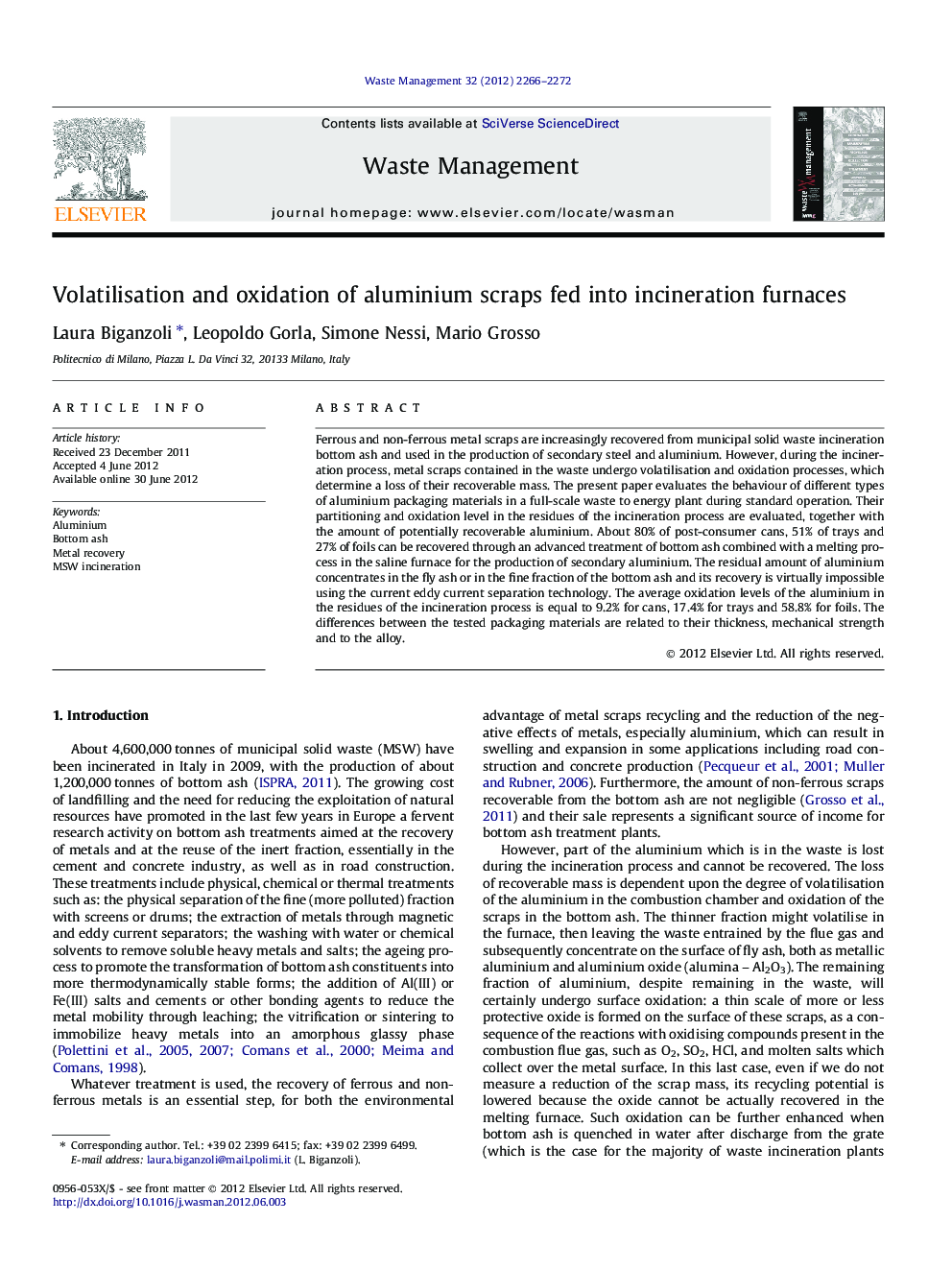| Article ID | Journal | Published Year | Pages | File Type |
|---|---|---|---|---|
| 4472203 | Waste Management | 2012 | 7 Pages |
Ferrous and non-ferrous metal scraps are increasingly recovered from municipal solid waste incineration bottom ash and used in the production of secondary steel and aluminium. However, during the incineration process, metal scraps contained in the waste undergo volatilisation and oxidation processes, which determine a loss of their recoverable mass. The present paper evaluates the behaviour of different types of aluminium packaging materials in a full-scale waste to energy plant during standard operation. Their partitioning and oxidation level in the residues of the incineration process are evaluated, together with the amount of potentially recoverable aluminium. About 80% of post-consumer cans, 51% of trays and 27% of foils can be recovered through an advanced treatment of bottom ash combined with a melting process in the saline furnace for the production of secondary aluminium. The residual amount of aluminium concentrates in the fly ash or in the fine fraction of the bottom ash and its recovery is virtually impossible using the current eddy current separation technology. The average oxidation levels of the aluminium in the residues of the incineration process is equal to 9.2% for cans, 17.4% for trays and 58.8% for foils. The differences between the tested packaging materials are related to their thickness, mechanical strength and to the alloy.
► Aluminium packaging partitioning in MSW incineration residues is evaluated. ► The amount of aluminium packaging recoverable from the bottom ashes is evaluated. ► Aluminium packaging oxidation rate in the residues of MSW incineration is evaluated. ► 80% of aluminium cans, 51% of trays and 27% of foils can be recovered from bottom ashes.
